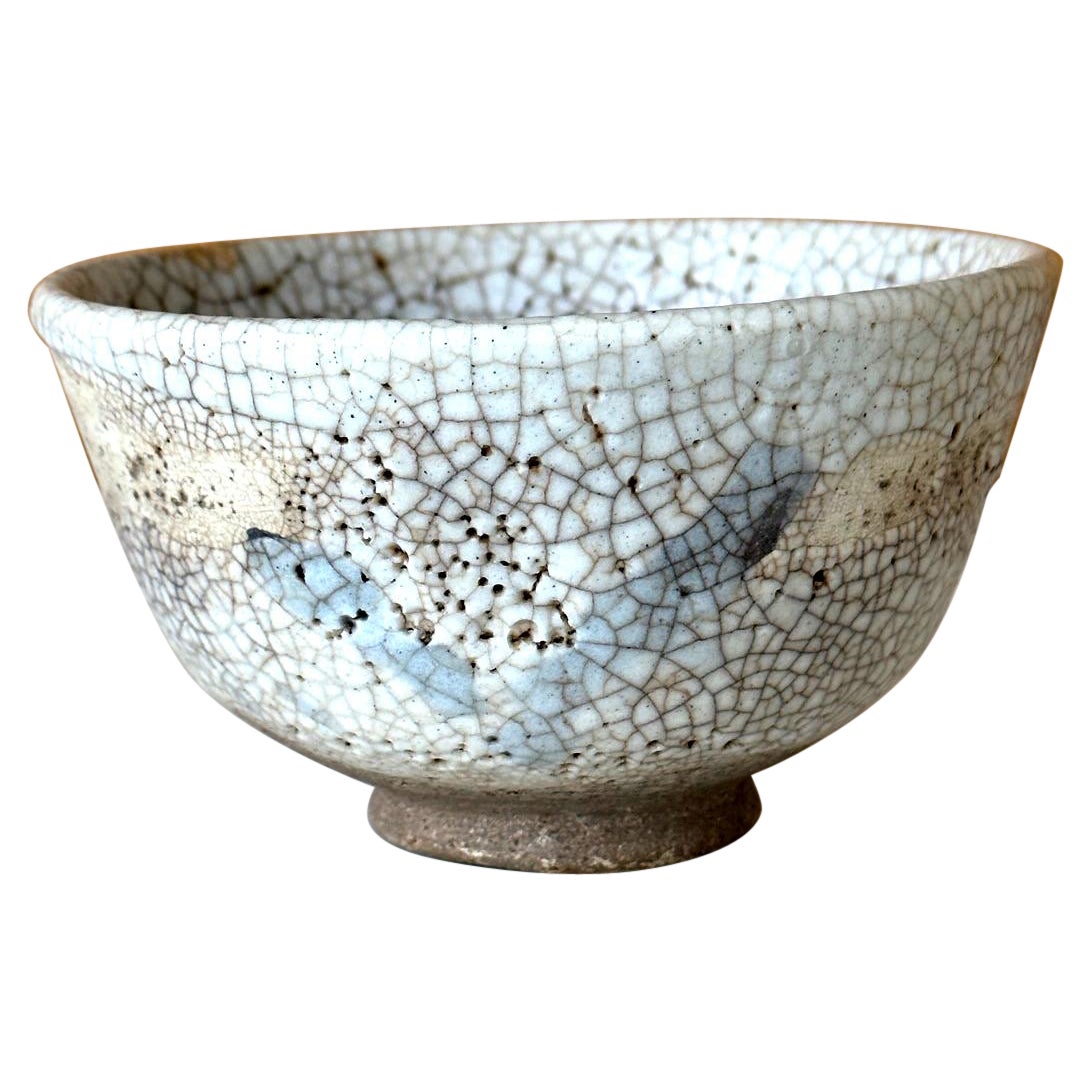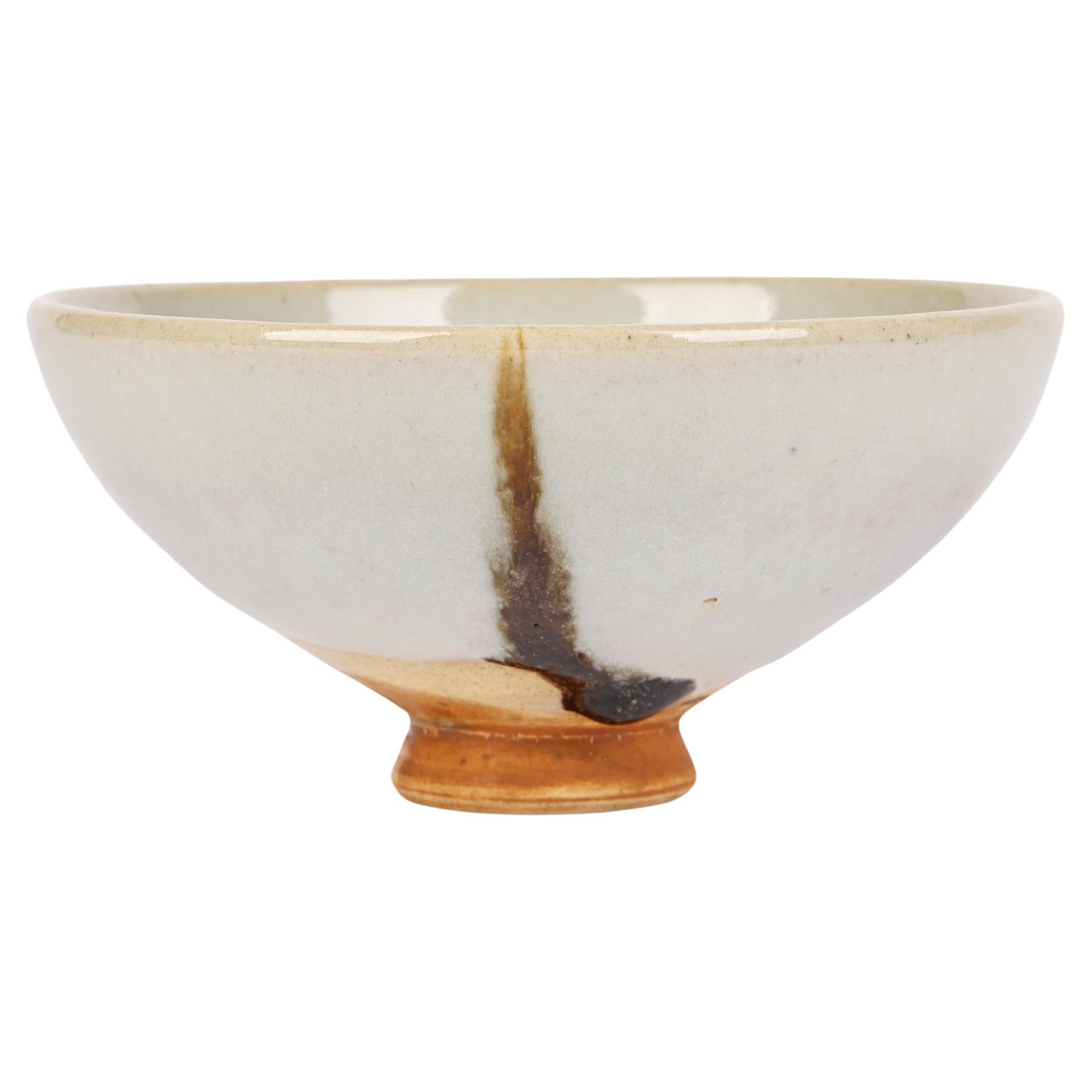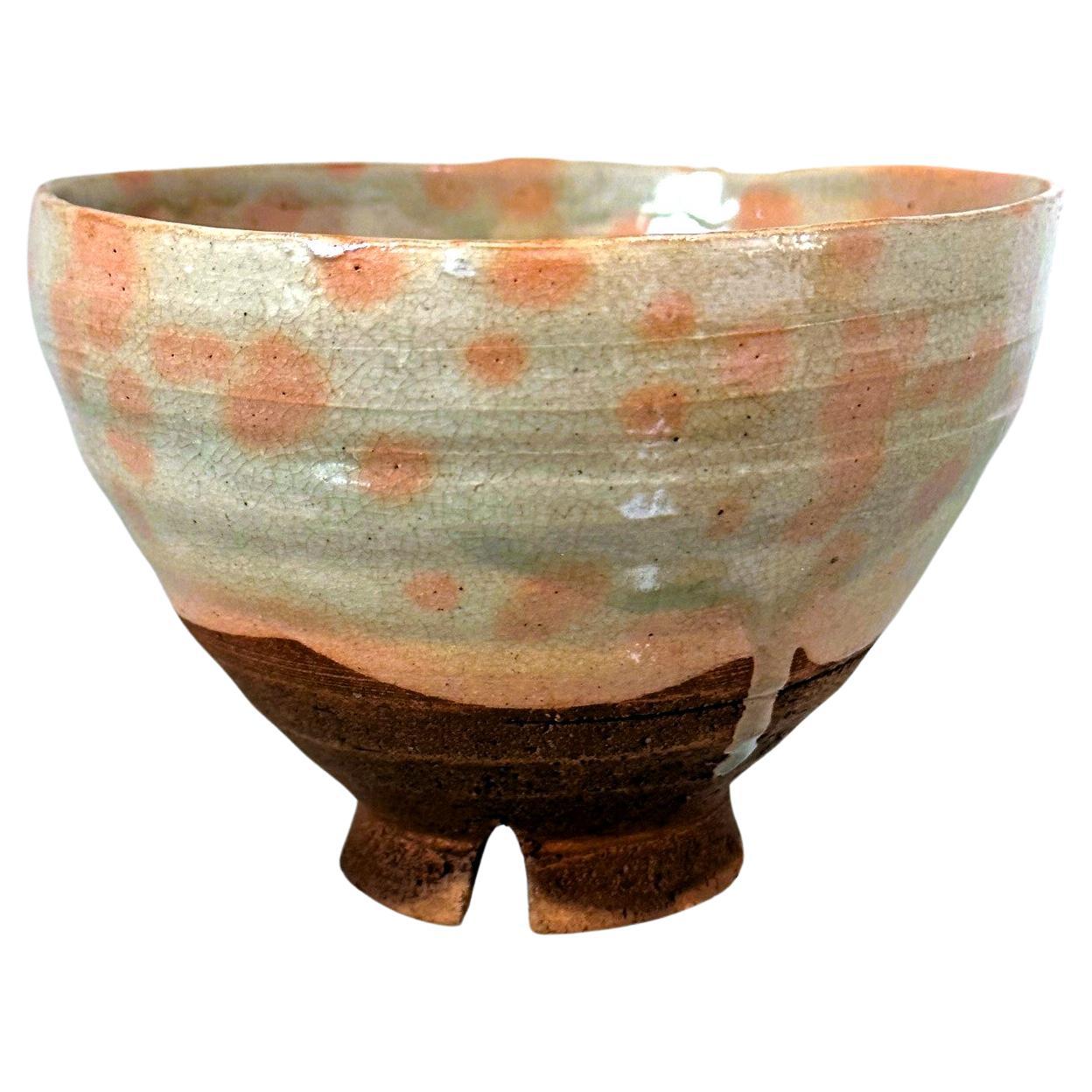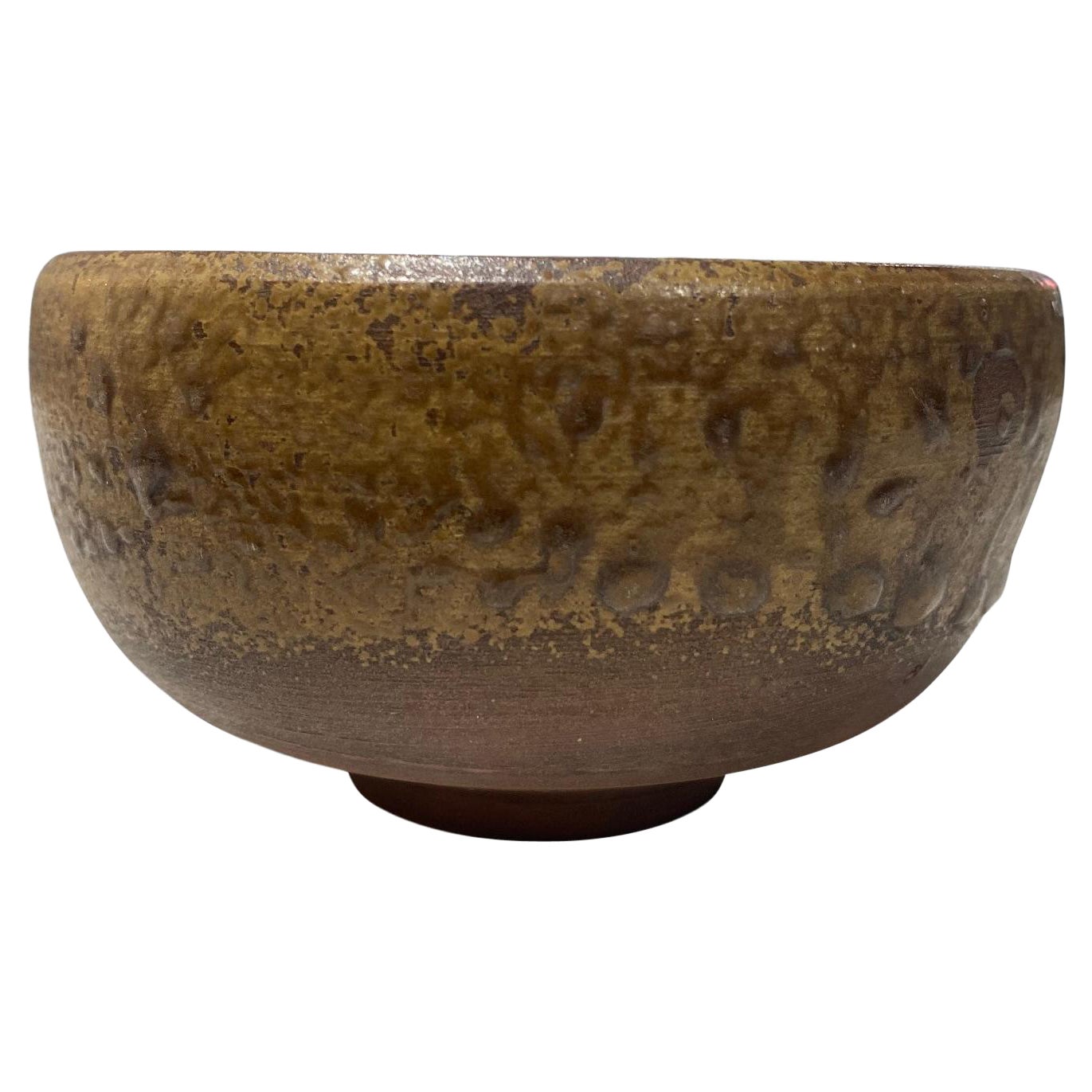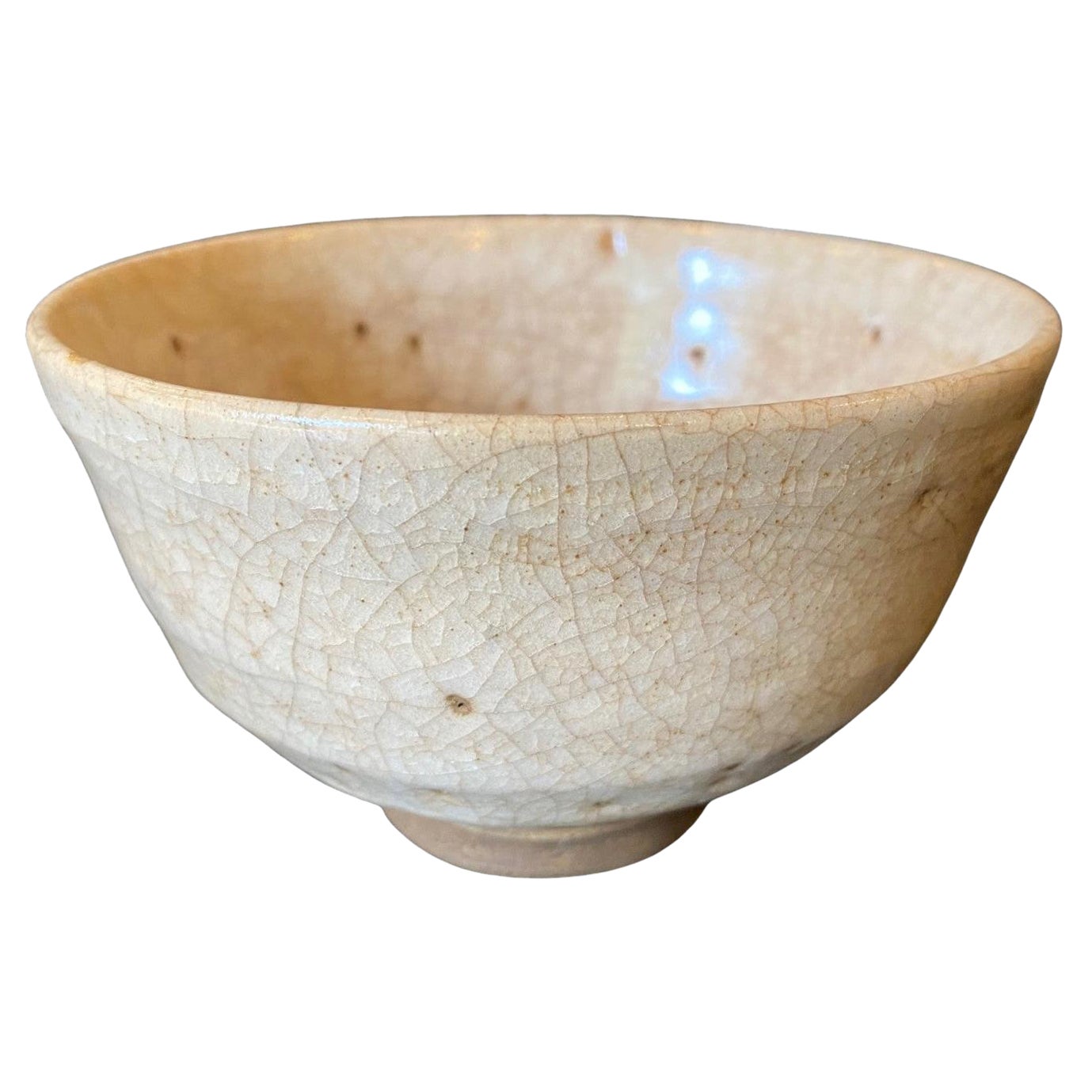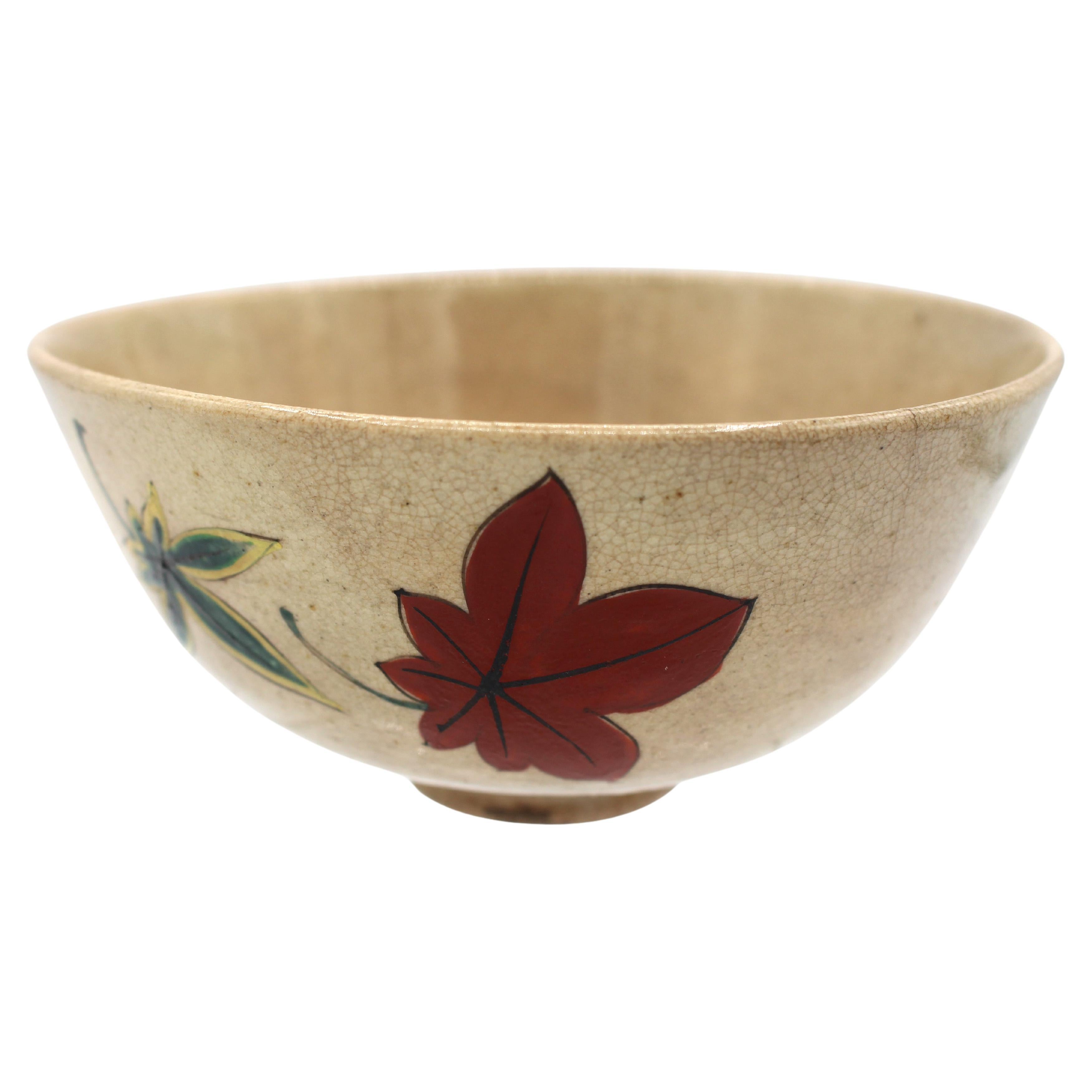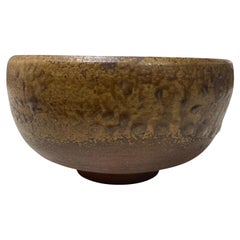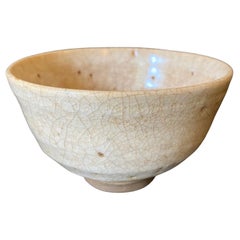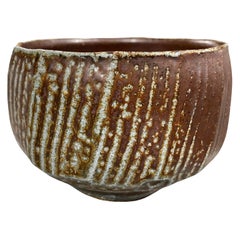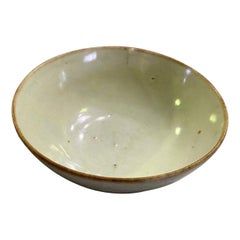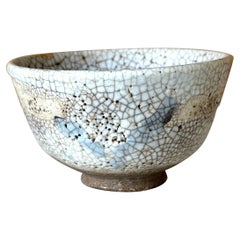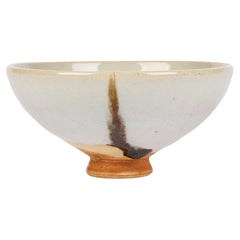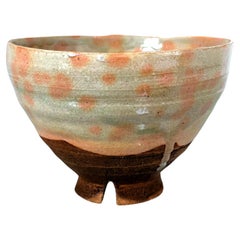Items Similar to Ogata Kenzan Signed Japanese Asian Edo Period Pottery Tea Bowl Chawan
Want more images or videos?
Request additional images or videos from the seller
1 of 21
Ogata Kenzan Signed Japanese Asian Edo Period Pottery Tea Bowl Chawan
$3,250
£2,466.03
€2,819.68
CA$4,539.37
A$5,047.16
CHF 2,635.35
MX$61,436.23
NOK 33,625.90
SEK 31,505.86
DKK 21,043.79
Shipping
Retrieving quote...The 1stDibs Promise:
Authenticity Guarantee,
Money-Back Guarantee,
24-Hour Cancellation
About the Item
A spectacularly designed and beautifully made Chawan tea bowl dating back to the Edo period. This work is attributed to Ogata Kenzan (1663-1743) who is widely considered to be Japan's most famous ceramic artist.
Ogata Kenzan (尾形 乾山), whose original name was Ogata Shinsei, was born in 1663 in Kyoto, Japan. Kenzan studied with the potter Nonomura Ninsei and eventually established his own kiln. Kenzan is known for his distinctive style and motifs which often featured freely brushed grasses, blossoms, flowers, and birds. His works were famed for their perfect relation between design and shape. He often collaborated on the decoration of pottery with his older brother, the Japanese artist Ogata Korin, after whom the style known as Rinpa (Rimpa) was named.
After his passing in 1743, subsequent Japanese potters inherited the name Ogata Kenzan (none were blood-related) as an homage to the original pottery master.
The bowl, which features the very coveted Maru-Mon circular pattern, is signed by Ogata on the base. The "Kenzan" can be made out despite the glaze overflow.
The Japanese antique dealer we acquired the bowl from said he was unsure if this piece was made by Ogata Kenzan the First or Ogata Kenzan the Second though, based on his years of collecting, believed it was likely the work of the first Ogata Kenzan. The bowl is age-appropriate as is the signature to be that of the original Kenzan.
The tea bowl comes with the original wood box which has Japanese writing on the bottom - perhaps a poem but our sources have been unable to translate it. The Japanese characters/ writing appears quite old. Our translators both at home and abroad in Japan have had difficulty deciphering it.
This work would be a great addition to any Asian or Japanese pottery/ ceramic collection - sure to stand out.
Bowl dimensions: 2.6" high, 4.6" wide, 4.5" deep
Box: 4.25" high, 5.25" wide, 5.25" deep.
- Dimensions:Height: 4.5 in (11.43 cm)Width: 4.6 in (11.69 cm)Depth: 2.6 in (6.61 cm)
- Style:Edo (Of the Period)
- Materials and Techniques:
- Place of Origin:
- Period:
- Date of Manufacture:18th Century
- Condition:The bowl is in very good vintage condition with one very small, thin hairline crack from the non-decorative side rim (quite natural with pottery pieces of this age. Does not leak. please see photos). Truly a special and unique work overall.
- Seller Location:Studio City, CA
- Reference Number:1stDibs: LU2254326799652
About the Seller
5.0
Platinum Seller
Premium sellers with a 4.7+ rating and 24-hour response times
1stDibs seller since 2016
908 sales on 1stDibs
Typical response time: <1 hour
- ShippingRetrieving quote...Shipping from: Van Nuys, CA
- Return Policy
Authenticity Guarantee
In the unlikely event there’s an issue with an item’s authenticity, contact us within 1 year for a full refund. DetailsMoney-Back Guarantee
If your item is not as described, is damaged in transit, or does not arrive, contact us within 7 days for a full refund. Details24-Hour Cancellation
You have a 24-hour grace period in which to reconsider your purchase, with no questions asked.Vetted Professional Sellers
Our world-class sellers must adhere to strict standards for service and quality, maintaining the integrity of our listings.Price-Match Guarantee
If you find that a seller listed the same item for a lower price elsewhere, we’ll match it.Trusted Global Delivery
Our best-in-class carrier network provides specialized shipping options worldwide, including custom delivery.More From This Seller
View AllKaneshige Toyo National Treasure Signed Japanese Bizen Pottery Chawan Tea Bowl
Located in Studio City, CA
A beautiful, perfectly shaped antique Bizen ware Chawan tea bowl by renowned Japanese master potter/artist Kaneshige Toyo (1896-1967) featuring a unique natural, organic forming ash glaze. Kaneshige is universally considered to be the founder of modern Bizen pottery.
In 1956, Kaneshige was certified as a Living National Treasure (Important Intangible Cultural Heritage) for his work in Bizen Ware pottery/ceramics. Bizen Ware is a type of Japanese pottery traditionally from the Bizen province, presently a part of the Okayama prefecture. It is considered one of the Six Ancient Japanese Kilns (along with Echizen ware, Seto ware, Shigaraki ware, Tamba ware, and Tokoname ware).
The piece is signed/ sealed on the base with one of Kaneshige's traditional incised marks.
A rather engaging and scarce work. Would be a fantastic addition to any Japanese/Asian pottery or Bizen Ware collection or eye-catching stand-alone work in about any setting.
Kaneshige's work can be found in numerous prominent collections and museums including:
Aichi Prefectural Ceramic Museum, Seto, Japan
Brooklyn Museum, NY
Hagi Uragami Museum, Yamaguchi, Japan
Honolulu Art Museum, HI
Ibaraki Ceramic Art Museum, Kasama, Japan
Indiana Art...
Category
Mid-20th Century Japanese Showa Ceramics
Materials
Stoneware
Shinbei Sakakura X (10th) Japanese Hagi Yaki Ware Pottery Chawan Tea Bowl & Box
Located in Studio City, CA
A wonderfully hand crafted and beautifully glazed Hagi Yaki Ware Chawan tea bowl by the 10th Shinbei Sakakura (X). This piece has quite a special feel to it. The Chawan radiates i...
Category
Antique Mid-19th Century Japanese Edo Ceramics
Materials
Pottery, Stoneware
Japanese Asian Style Signed Studio Pottery Wabi-Sabi Ceramic Chawan Tea Bowl
Located in Studio City, CA
A stunning Japanese Asian-influenced stoneware Studio Pottery Chawan tea bowl that features a beautiful dark rich glaze with wonderful shifts in pattern and texture.
This particula...
Category
20th Century Japanese Showa Ceramics
Materials
Stoneware
Korean Joseon Dynasty Glazed Pottery Ceramic Hakame Chawan Tea Bowl
Located in Studio City, CA
A wonderful Joseon Dynasty (1392-1897) Korean pottery bowl with a beautiful muted glaze, color, and nicely aged patina.
As this is not our area of expertise, we are listing it si...
Category
Antique 19th Century Korean Ceramics
Materials
Pottery
Japanese Asian Signed Studio Pottery Wabi-Sabi Ceramic Glazed Chawan Tea Bowl
Located in Studio City, CA
A stunning Japanese stoneware studio pottery chawan tea bowl that features a beautiful, heavy and sumptuously multi-glaze with wonderful shifts in color and texture. This bowl is wit...
Category
20th Century Japanese Showa Ceramics
Materials
Stoneware
Japanese Asian Signed Studio Pottery Wabi-Sabi Ceramic Glazed Chawan Tea Bowl
Located in Studio City, CA
A gorgeous Japanese studio pottery chawan tea bowl that features a wonderful reddish-orange glaze with various shifts in colour and texture.
This particular piece encompasses the...
Category
20th Century Japanese Showa Ceramics
Materials
Earthenware
You May Also Like
Japanese Shino Chawan Tea Bowl Edo Period
Located in Atlanta, GA
A Japanese ceramic Chawan (tea bowl) of e-Shino (painted Shino) ware style circa mid-late 18th century Edo period. The classically shaped bowl features an abstract blue paint of blue grass and displays strong characters in the milky white glaze, with overall crawling and crackling effect. One of the most distinctive characteristics of Shino that is exemplified on this bowl is the small pinholes called suana, which tea masters favor (termed as yuzuhada, or citron skin). The milky-white feldspar...
Category
Antique Late 18th Century Edo Ceramics
Materials
Ceramic
Chinese Jun Ware Streak Glazed Art Pottery Bowl
Located in Bishop's Stortford, Hertfordshire
A very stylish good quality Chinese Jun Ware pottery bowl decorated with streaked glazes on a red and pale blue glazed ground dating from the latter 19th o...
Category
Antique 19th Century Chinese Other Ceramics
Materials
Pottery
Japanese Glazed Ceramic Gohon Chawan Tea Bowl
Located in Atlanta, GA
A bespoken Japanese ceramic glazed tea bowl with fabric insert, pouch and original padded wood tomobako box. The chawan has a slightly irregular wall supported by a high notched foot...
Category
Antique 19th Century Japanese Meiji Ceramics
Materials
Ceramic
Circa 1850 Kiyomizu Chawan or Tea Ceremony Bowl
Located in Chapel Hill, NC
Circa 1850 Kiyomizu Chawan or Tea Ceremony Bowl, Kyoto, Japan. A rare example, late Edo period. Incredibly light pottery, elegant crackle glaze & restrained decoration of a few leave...
Category
Antique 1850s Japanese Other Pottery
Materials
Pottery
$360 Sale Price
20% Off
Japanese Glazed Mino Tea Bowl Chawan Showa Period Ex-Musuem
Located in Atlanta, GA
A Japanese glazed ceramic tea bowl (chawan) in Gohon style likely made in Showa period of 20th century. Supported by a short foot ring with a notch, the bowl was made from coarse cla...
Category
Early 20th Century Japanese Meiji Ceramics
Materials
Ceramic
Small Satsuma Earthenware Tea Bowl
Located in Lymington, Hampshire
A small Satsuma earthenware tea bowl, the speckled greyish body decorated with four panels of alternating bijinand flowers, painted in overglaze en...
Category
Antique Early 1900s Japanese Ceramics
Materials
Ceramic
More Ways To Browse
Japanese Ceramics Edo Period Or Earlier
Original Asian Art
Edo Period Japanese Art
Signed Artist Bowl
Kiln Japanese
Antique Japanese Pottery
Edo Wood
Antique Pottery Names
Japanese Brushes
Signed Japanese Pottery
Pottery Bowl Japan
Japanese Bowl Signed
Painted Japanese Bowl
Potters Stand
Edo Period Ceramics
Japanese Tea Bowl
Signed Wood Bowl
Antique Artist Paint Box
